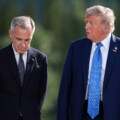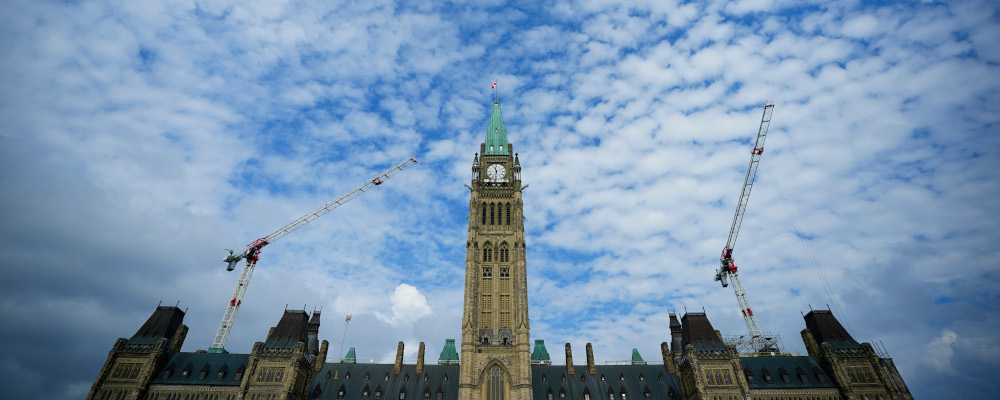Although the next federal election could be more than a year away and its outcome is far from guaranteed, polls indicate that the Conservative Party of Canada is likely to be the winner. As the party prepares its policy platform, it should also start to give some thought to the structure of the federal government itself and possible institutional changes to improve the policymaking process. Such institutional reforms could be key to enacting the types of bold policies that the country needs to restore economic growth, balance Canada’s energy and environmental goals, and strengthen the its defence and security capacities.
There have been growing questions in recent years about the federal government’s state capacity. Despite a 40-percent increase in the size of its employment footprint and broadly similar increases in its use of third-party consultants since 2015, there have been a number of high-profile cases of government failure that have contributed to an erosion of expectations and trust on the part of Canadians. The system seems too slow, too weak, and too risk-averse to meet its basic obligations and prepare the country for the long-term challenges that it faces. In short, bigger government hasn’t produced better government.
One factor that’s regularly cited to explain some of these trends is the decline of the so-called “Cabinet government” and the concentration of power in the Prime Minister’s Office. Although these claims can be overstated, they clearly point to real trends that have continued mostly unabated since the early 1970s.

One might indeed lament these public administration developments. But their durability—including across successive Liberal and Conservative governments—suggests that they’re unlikely to change soon. It may be more productive therefore to ask ourselves how to strengthen public administration and state capacity in light of the actual model of federal policymaking in which PMO continues to play an oversized role.
We should emphasize here that this isn’t a normative defence of Canada’s democratic status quo. We both support MP Michal Chong’s Reform Act and its effort to rebalance the relationship between party leaders and the parliamentary caucus, one of us has written in favour of parliamentary reforms to strengthen the legislature’s capacity to pushback against the executive’s tendency to legislate by regulation, and at least one of us is somewhat favourable to proportional representation.
The primary challenge that we’re trying to solve is that the current distribution of policy expertise and responsibility across the federal government is producing suboptimal outcomes in a context in which a lot of policy issues are “horizontal” or multi-departmental and decision-making responsibility still disproportionately rests with the Prime Minister.
The Prime Minister’s Office (and Privy Council Office) is the only part of the federal system with a whole-of-government perspective and yet it has limited resources relative to the government as a whole to conceive of new policies, analyse policies from government departments, and coordinate policy across the government. The biggest challenges facing the country—including productivity growth, immigration integration, climate change, aging demographics, and Canadian identity—will demand government-wide responses that will ultimately require heavy coordination and direction from PMO.
Yet PMO/PCO is relatively small, lacks much internal policy capacity, and even faces limits in terms of organizing and coordinating government-wide policies. So-called “four corners meetings” hosted by PMO/PCO and involving officials from relevant departments and agencies are a poor substitute for institutional models that enable greater internal policy development and coordination.
In light of these institutional challenges, an incoming Conservative government should seek to modernize Ottawa’s policymaking structure by boosting the capacity and expertise available to the Prime Minister to formulate and implement his or her government’s key policies. The goal should be to better align the current asymmetries between the federal government’s decentralized capacity and its centralized decision-making. The White House model of the National Economic Council and Domestic Policy Council would represent a major improvement to Ottawa’s policymaking process and ultimately its state capacity.
Thinking in systems
The National Economic Council and Domestic Policy Council were established via executive orders in 1993 by President Bill Clinton. The councils were created as an institutional response to long-standing concerns about the inherent challenges of cross-departmental coordination and bureaucratic inertia. Each subsequent administrations has retained and strengthened them such that today they’re powerful bodies of centralized analysis, advice, and implementation for the president.
In practice, both councils serve as bodies where cabinet members and senior governmental and political staff meet to develop and coordinate policy. This work is complemented by dedicated staff who are responsible to provide new policy ideas and ensure effective implementation. The staff tends to be politically aligned and part of the White House itself yet is a half-step away from the issues of the day in order to oversee the ideation, execution, and implementation of the president’s overall agenda.
Research and scholarship generally points to the effectiveness and utility of these institutional models in the U.S. As one commentator has written of the National Economic Council:
…NEC’s role is generally less visible in the press than certain others, in part because the job is not subject to Senate confirmation and in part because the NEC interfaces with the president rather than with the public as economic policies are implemented. Cabinet-level positions such as the Secretary of the Treasury and the Director of the Office of Management and Budget (OMB) are every bit as important as commonly portrayed, both as economic policy developers and later implementers. But it is the NEC that actually runs the president’s economic decision process, with those other advisors acting as participants.
Aligning capacity with decision-making
Drawing on this model, a possible incoming Conservative-led Prime Minister’s Office should aim to strengthen the policy capacity and expertise around it by establishing policy councils staffed by PMO/PCO officials. This would better align capacity with decision-making with the federal government and address some of the state capacity deficiencies inherent in the system.
These policy councils would not only consist of PMO/PCO staff, but they could also include non-government experts and representatives from relevant departments, agencies, and ministers’ offices, including relevant ministers themselves. They would also have their own policy analysis and research capacity, unlike current cabinet committees. This would provide an alternative capacity for policy ideation and oversight that would break the monopoly of government departments while at the same time not sidelining their advice altogether.
This new layer of policy thinking and implementation oversight—particularly on cross-departmental files (such as a productivity agenda)—would strengthen the capacity around the prime minister and his or her office and enable it to overcome the inherent challenge of dealing with policy issues that aren’t “owned” by any one department or minister within the federal government.
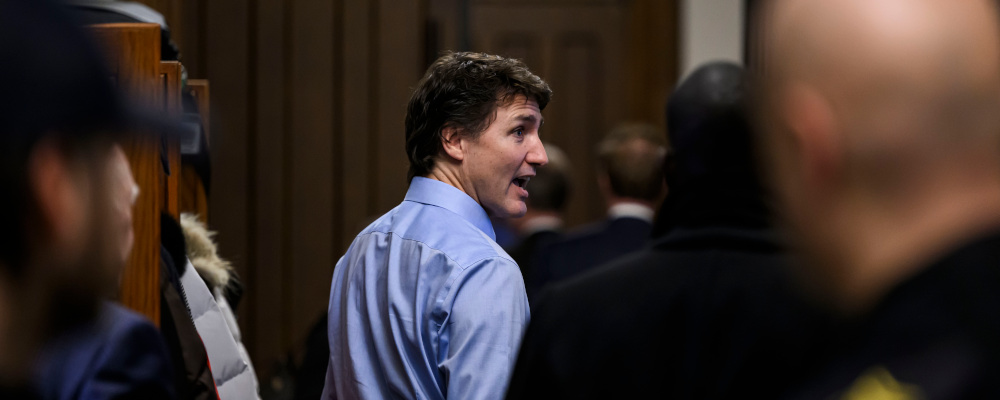
As an example: the creation of a National Economic Council wouldn’t come at the expense of the Department of Finance or Cabinet committees per se. It would merely provide the prime minister with his or her own capacity to develop economic policy ideas (including with respect to fiscal federalism, fiscal transfers, overall fiscal policy, and taxation), pressure test ones that come from elsewhere within (or outside) the system and oversee implementation after eventual policy adoption—particularly on cross-cutting issues like productivity or poverty.
Cabinet committees would still be responsible for adjudicating and approving specific policies and individual departments would still be responsible for putting forward policy ideas and ultimately implementing the policy tools within their purview. One might think of a new National Economic Council (or a Domestic Policy Council) as a new layer of policy capacity that’s more responsive to the prime minister than the current policymaking architecture.
Put differently: these policy councils would simply create a more institutional and systematic capacity around PMO/PCO such that it’s not merely a policy “taker” from the system but rather has a greater ability to be a policy “maker” and to provide oversight of the government’s signature policy initiatives—particularly cross-departmental ones for which there are accountability questions.
There’s the potential here that not only would such a model produce better public policy due to stronger checks and balances within the system, but that in a context in which policy development itself was more of a shared enterprise between PMO and government departments, the latter could spend more time and resources focused on implementation and broader service delivery considerations. They could in effect be more attentive to addressing the government’s underlying state capacity challenges.
The current Liberal government committed to establishing the U.S. model of Council of Economic Advisers in its 2021 election platform. This is a somewhat different idea than the one presented here.
As a hypothetical example: if the president had an analysis of why young adult males are dropping out of the labour force, that analysis would likely be authored by the Council of Economic Advisers and submitted through a process led by the National Economic Council. If on the other hand, the president wished to develop a policy to increase labour force participation, the National Economic Council would lead that process with the Council of Economic Advisers chair as one of the participants.
We’d argue that the government doesn’t require incremental policy-adjacent research so much as it needs a more institutional and systematic capacity to carry out policy development and implementation on key initiatives. It doesn’t need an internal think tank. It requires a “do-tank” that’s capable of in-house policy ideation, development, and coordination.
An incoming government’s initial policy agenda will of course be a key determinant of its success. But so will the institutional set-up that it establishes for itself. Augmenting the policy capacity and expertise within the Prime Minister’s Office may be a key factor in whether a possible Conservative-led government is able to enact the types of reforms needed to boost Canada’s economy and fulfill its various other policy goals over its time in office. The creation of a new National Economic Council and Domestic Policy Council should therefore be on the Conservatives’ agenda.
Recommended for You
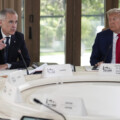
Need to Know: Mark Carney’s digital services tax disaster
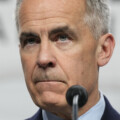
Theo Argitis: Carney is dismantling Trudeau’s tax legacy. How will he pay for his plan?
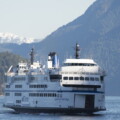
Kirk LaPointe: B.C.’s ferry fiasco is a perfectly Canadian controversy

‘I want to make Canada a freer country’: Conservative MP Andrew Lawton talks being a newbie in Parliament, patriotism, and Pierre Poilievre’s strategy
